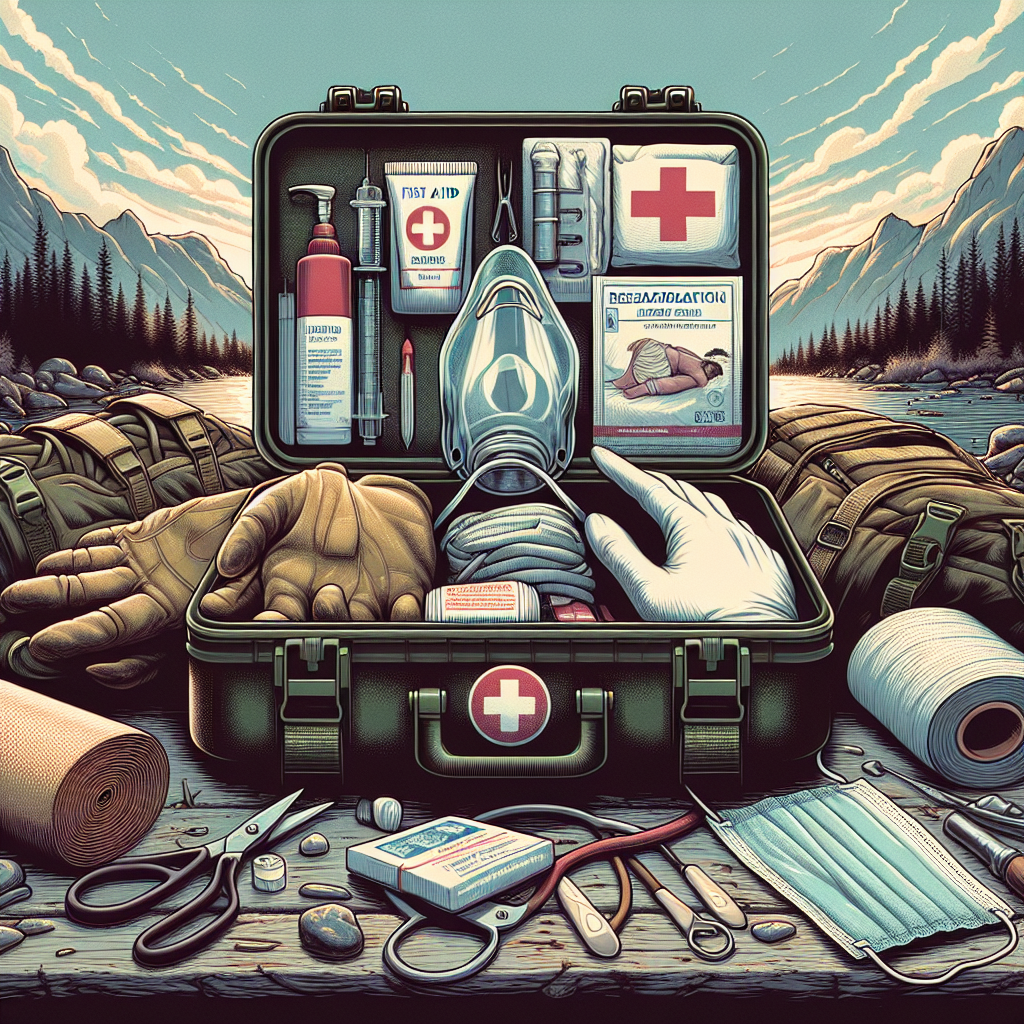
In survival situations, having the necessary first aid skills can mean the difference between life and death. When faced with adversity, being able to provide immediate medical care can greatly increase your chances of survival and the survival of those around you. This article explores the vital first aid skills required to navigate through challenging circumstances, from basic wound care to CPR techniques. By mastering these essential skills, you will be well-prepared to handle any unexpected emergencies that may arise in the wilderness or any other survival scenario.
Basic First Aid Skills
Assessing the Situation
When faced with a survival situation, the first step is to assess the situation and ensure your own safety. You should quickly evaluate the surroundings and determine any potential dangers. Look for hazards such as fire, falling debris, or dangerous animals that might pose a threat to your safety. Assess the condition of the injured person and identify any life-threatening injuries that require immediate attention.
CPR and Chest Compressions
Cardiopulmonary resuscitation (CPR) is a crucial skill that can save lives in emergency situations. If a person is unresponsive and not breathing, CPR should be administered without delay. This life-saving technique involves chest compressions and rescue breaths. Make sure to position the person on a firm surface and place the heel of your hand on the center of their chest. Push down hard and fast, aiming for a compression depth of about 2 inches. For every 30 compressions, provide 2 rescue breaths by tilting the head back, pinching the nose, and giving two full breaths into the person’s mouth.
Controlling Bleeding
In survival situations, it is essential to know how to control bleeding to prevent further harm. Apply direct pressure to the wound using a sterile cloth, if available, or any available fabric. Maintain pressure until the bleeding stops or until medical help arrives. If the bleeding does not stop, consider elevating the injured area if it does not cause additional pain or worsening of the injury. Applying a tourniquet should only be considered as a last resort when all other methods fail to control severe bleeding.
Treating Burns
Burns can occur in a variety of survival situations, such as contact with fire or hot objects. Immediate treatment for burns is crucial to reduce pain and prevent further damage. Start by removing the person from the source of the burn and cooling the area with cold running water for at least 10 minutes. Do not use ice or iced water as it can further damage the skin. Cover the burn with a clean, non-stick dressing or a sterile cloth. It is important to seek medical attention for severe burns or burns affecting sensitive areas such as the face, hands, feet, or genitals.
Managing Fractures and Sprains
In survival situations, fractures and sprains are common injuries that may require immediate attention. If you suspect a fracture, immobilize the injured limb by splinting it, using available materials such as branches, cardboard, or clothing. Support the injured limb above and below the fracture site to prevent movement. For sprains, the R.I.C.E. method can provide relief and aid in the healing process. Rest the injured area, apply ice or a cold compress, compress the area with a bandage, and elevate the limb to reduce swelling.
Identifying and Responding to Shock
Shock is a life-threatening condition that can occur as a result of severe injuries, such as excessive bleeding, burns, or trauma. It requires immediate attention to prevent further complications. Signs of shock include pale or clammy skin, rapid and weak pulse, shallow breathing, and disorientation. To respond to shock, lay the person flat on their back and elevate their legs if there are no suspected spinal or leg injuries. Keep them warm by covering them with a blanket or clothing. Seek medical help as soon as possible.
Basic Wound Care
Cleaning and Disinfecting
Proper wound care is essential to prevent infection and promote healing. Start by washing your hands thoroughly with soap and water or using hand sanitizer if water is not available. Clean the wound gently with mild soap and clean running water to remove any dirt or debris. Avoid using harsh antiseptics as they may further damage the tissue. Pat the wound dry with a clean cloth or sterile gauze and apply an appropriate disinfectant, such as an alcohol swab or betadine solution. Cover the wound with a sterile dressing to protect it from further contamination.
Applying Bandages
After cleaning and disinfecting the wound, applying a bandage can help keep it clean and prevent further injury. Start by placing sterile or clean gauze directly over the wound. Hold the gauze in place and wrap a sterile bandage or adhesive tape around it to secure it in place. Make sure the bandage is not too tight, as it can disrupt blood circulation. Monitor the wound regularly for signs of infection or worsening symptoms.
Administering Antibiotics
In some survival situations, access to medical care may be limited, making it important to have a basic understanding of administering antibiotics. However, it is crucial to note that antibiotics should only be used under the guidance of a healthcare professional. If you have a supply of antibiotics and are trained to administer them, follow the instructions carefully regarding dosage and frequency. Always consult a medical professional as soon as possible for proper evaluation and treatment.
Dealing with Tetanus
Tetanus is a bacterial infection that can enter the body through open wounds, especially those caused by puncture injuries or contaminated objects. In survival situations where medical care may be limited, it is important to be aware of the signs and symptoms of tetanus and know how to manage it. If the wound is deep, dirty, or caused by a high-risk object, such as rusted metal, it is crucial to seek medical attention for proper tetanus immunization and treatment. Cleaning and disinfecting the wound is essential to reduce the risk of tetanus infection.
Remember, these articles are meant to provide general information and guidance. It is always recommended to seek professional medical help as soon as possible in emergency situations or when advanced medical care is available. Being prepared with basic first aid skills can make a significant difference in survival situations, but proper evaluation and treatment by medical professionals are crucial for optimal outcomes.







